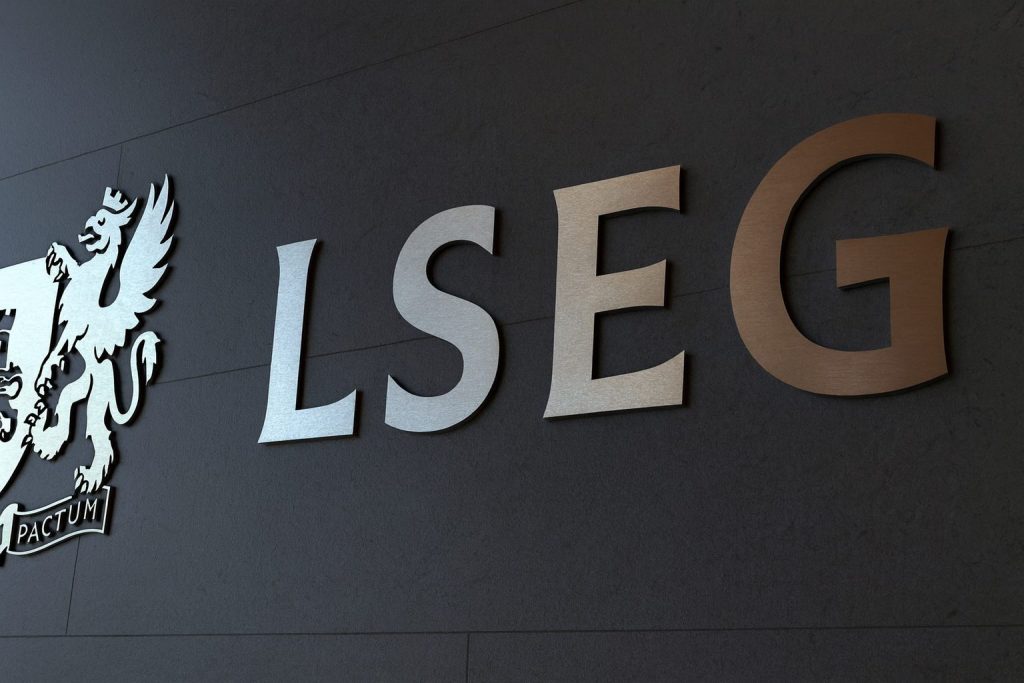LONDON – 27 November 2025 — Phoenix Group Holdings plc (LON: PHNX), the UK’s largest long‑term savings and retirement business, was trading slightly higher on Thursday as investors digested a tax‑raising Autumn Budget, fresh commentary from chief executive Andy Briggs, and recent evidence that the insurer’s balance sheet remains resilient under tough regulatory stress tests. [1]
- PHNX share price today: around 693p, up roughly 0.4% intraday, near the top of its 52‑week range of 476p–699.5p, valuing the group at about £6.9bn. [2]
- Budget fallout: Andy Briggs has joined other business leaders in criticising aspects of Chancellor Rachel Reeves’ “buy now, pay later” Budget, especially a proposed cap on salary‑sacrifice pension contributions. [3]
- Capital strength: Phoenix has just reported strong results in the PRA’s LIST 2025 life insurance stress test, remaining within its 140–180% shareholder capital coverage target range, on top of positive Bank of England sector‑wide stress‑test findings. [4]
- Strategic shift: The group is preparing to rebrand as Standard Life in March 2026 and is in talks to raise over £1bn from private capital to grow its pension‑risk transfer business. [5]
- Income story intact: Despite volatile IFRS earnings, consensus data still points to an estimated dividend yield of about 8% for 2025–26 and a forward P/E around 15x 2026 earnings. [6]
PHNX share price on 27 November 2025
By late morning on Thursday, Phoenix Group shares were changing hands at 693.0p, up 2.5p (0.36%) on the day, according to trade data from London South East. The stock traded between 689.0p and 698.0p during the session, with volume a little over 830,000 shares. [7]
That leaves PHNX:
- Close to its 52‑week high of 699.5p, compared with a low of around 475–476p over the past year. [8]
- Roughly 36% higher year‑to‑date, comfortably ahead of the broader FTSE 100. [9]
On a real‑time estimate basis, MarketScreener shows Phoenix trading at about 692.5p, with a 5‑day gain of 5.35% and a year‑to‑date gain of just under 36%. [10]
Those gains come despite a bruising reaction to half‑year results in September, when the shares dropped more than 7% in a single session after a sharp fall in reported book value – a reminder that sentiment around PHNX can turn quickly when headline capital numbers disappoint. [11]
Reeves’ Autumn Budget 2025: why Phoenix is in the middle of the row
The main piece of Phoenix‑related news actually landing today is political rather than corporate.
CEOs attack “buy now, pay later” Budget
A Bloomberg report this morning said chief executives from some of Britain’s largest companies have criticised Chancellor Rachel Reeves’ Autumn Budget, which raises a range of taxes while using giveaways and targeted measures to cushion voters — prompting the “buy now, pay later” label. Phoenix chief executive Andy Briggs is named among the signatories voicing concern. [12]
At the same time, the Financial Times’ personal‑finance coverage of the Budget notes that Briggs’ “main concern” is the proposed cap on salary‑sacrifice arrangements for workplace pensions. He argues that limiting the ability of employees and employers to use this tax‑efficient structure could dent retirement saving at a time when many workers are already underprepared. [13]
ABI letter warns against salary‑sacrifice cap
These comments follow a joint letter dated 21 November from major insurers and pension providers, coordinated by the Association of British Insurers (ABI), urging Reeves not to restrict salary sacrifice for pension contributions. The letter – signed by leaders including Aviva’s Amanda Blanc and Phoenix’s Andy Briggs – warns that a cap or limit could:
- discourage long‑term saving,
- undermine confidence in the retirement system, and
- risk lower contributions just as the government is trying to improve pension outcomes. [14]
Citing ABI research, the signatories said that two in five savers would cut pension contributions if rules on salary sacrifice were tightened. They stressed that pension policy needs long‑term stability, not short‑term fiscal fixes, if people are to plan for retirement with confidence. [15]
Phoenix’s own Budget analysis
Ahead of yesterday’s Budget, Phoenix’s Head of Market Strategy, Anthony O’Brien, published a detailed note describing the Autumn Budget as one of the most significant in recent years. He estimated that Reeves faced a £30bn fiscal “hole”, likely to be filled largely through a patchwork of tax increases and frozen thresholds rather than overt hikes in headline income‑tax rates. [16]
From Phoenix’s perspective, O’Brien emphasised that:
- The Budget would be judged by gilt investors on whether it respects fiscal rules and controls borrowing.
- Relying on numerous small taxes rather than a straightforward income‑tax rise could add complexity and shift more of the burden onto businesses.
- Policy choices should avoid discouraging long‑term saving or undermining confidence in the pension system. [17]
With the Budget now published – and salary‑sacrifice limits still in the spotlight – Phoenix finds itself at the centre of a debate that directly affects its customer base and long‑term growth prospects.
Stress‑test results underline a robust capital position
While politics dominates the headlines today, investors are still digesting regulatory news from earlier this week that goes to the heart of Phoenix’s investment case: its ability to withstand severe market shocks while continuing to pay generous dividends.
Bank of England: life insurers resilient to severe stress
On 17 November, the Bank of England released the results of its first life‑insurance stress test under the new Solvency UK regime. The Prudential Regulation Authority (PRA) modelled a deep global recession with:
- falling interest and inflation rates,
- sharp declines in equity and property prices, and
- wider credit spreads.
All 11 major UK life insurers that took part — including Phoenix Group — remained above minimum capital requirements throughout the scenario, leading the BoE to conclude that the sector is resilient to “severe but plausible” shocks. [18]
LIST 2025: Phoenix still inside its 140–180% target range
The BoE sector‑wide exercise was followed this Monday by firm‑specific results from the PRA’s new Life Insurance Sector Stress Test (LIST 2025). Phoenix issued an RNS on 24 November summarising the outcome. [19]
Key numbers from the LIST 2025 disclosure:
- Phoenix Life Limited regulatory coverage ratio:
- 149% at FY24 reported
- 132% after the LIST stress scenario (a 17‑point fall).
- Phoenix Group regulatory coverage ratio:
- 151% reported
- 137% post‑stress (down 14 points).
- Phoenix Group shareholder capital coverage ratio (SCCR):
- 172% reported
- 155% after stress (a 17‑point reduction). [20]
Crucially, Phoenix highlighted that the post‑stress SCCR of 155% remains comfortably inside its stated target range of 140–180%, crediting its hedging strategy for limiting the impact of interest‑rate and equity shocks. [21]
Alliance News reported that both M&G and Phoenix “hailed” the results, arguing that the stress tests demonstrate their ability to withstand extremely adverse conditions while still supporting policyholders and shareholders. [22]
For investors worried about solvency in a higher‑rate, volatile market environment, these figures help to explain why PHNX’s share price has recovered strongly since late 2024 and now trades near its 12‑month highs.
Standard Life rebrand and the push into pension‑risk transfer
Beyond the Budget and stress tests, Phoenix is in the middle of a strategic transformation that will culminate in a new corporate identity next year.
From Phoenix Group to Standard Life
In early September, Phoenix announced that it will rebrand as Standard Life plc from March 2026, leveraging the 200‑year‑old Standard Life brand it acquired in 2021. Reuters reported that the announcement came alongside half‑year results that saw: [23]
- Shares fall 7.6% in a single day, the steepest drop since 2020.
- Shareholders’ equity (book value) fall 59% in the first half of 2025 to £768m, missing analysts’ expectations.
- Adjusted operating profit rise to £451m, up from £360m a year earlier, driven by pensions and savings growth.
Chief executive Andy Briggs argued that adopting the Standard Life name would put the group’s “most trusted brand” at centre stage, while stressing that Phoenix remains on track to meet its 2026 financial targets despite the hit to book value. [24]
Phoenix also said it would pull £20bn of annuity‑backed assets currently managed by long‑time partner abrdn in‑house, while abrdn would continue to manage around £150bn of policyholder assets. The move underlines Phoenix’s strategy of managing more annuity assets internally in pursuit of better returns and stronger customer outcomes. [25]
Raising more than £1bn for pension‑risk transfer growth
The rebrand comes as Phoenix seeks to scale up its presence in the pension‑risk transfer (PRT) market – where companies offload defined‑benefit pension liabilities to insurers.
An October report in the Financial Times said Phoenix is in talks to raise more than £1bn from private‑capital groups including Blackstone, Sixth Street and KKR. The aim is to give Phoenix more capacity to: [26]
- Compete for larger pension buy‑in and buyout deals.
- Invest more heavily in private credit and infrastructure assets backing its annuities, particularly in North America.
- Structure those assets so they remain compliant with UK solvency rules.
The article noted that Phoenix has recently lost a £4.6bn Ford pension deal to Legal & General, but that its Standard Life arm completed its largest transaction to date — a £1.9bn buy‑in for Marsh McLennan’s UK pension fund — in August, highlighting the growth opportunity in bulk annuities. [27]
For PHNX shareholders, successful fundraising and continued PRT deal‑flow could support higher long‑term earnings and justify Phoenix’s ambition to be one of the UK’s pension “megafunds” championed by the Treasury.
New leadership and sustainability headlines this week
Although there is no new stock‑exchange RNS today, Phoenix and its Standard Life brand have issued several announcements in the past few days that remain relevant on 27 November.
New CEO for Pensions & Savings at Standard Life
On 25 November, Standard Life announced that Angela Byrne – currently interim CEO of NatWest’s retail bank – will become CEO of its Pensions & Savings business from January 2026. The division oversees around £190bn of customer savings across three main channels and is described as a strategic priority for the group. [28]
Byrne will report directly to Andy Briggs and replace Colin Williams, who helped steer Phoenix’s transition from a “closed‑book consolidator” to a growth‑focused, customer‑facing business, according to trade‑press coverage. [29]
Heat‑pump skills report highlights sustainability agenda
Yesterday, Phoenix also published a sustainable‑investment press release warning that competition for skilled workers in the UK heat‑pump sector could derail the government’s Warm Homes Plan. The report identifies around 76,000 jobs in England with heat‑pump‑relevant skills, but finds many of those roles are already in high demand or lack capacity for retraining. [30]
Phoenix is calling for measures such as:
- targeted support for small firms retraining staff,
- a national “green heat” public‑information campaign, and
- a “heat‑pump skills passport” to make it easier for workers to move into the sector. [31]
While not directly earnings‑related, these initiatives form part of Phoenix’s broader ESG and policy engagement strategy, which matters for institutional investors increasingly focused on sustainability credentials.
Dividends, valuation and analyst sentiment
High income stock despite volatile earnings
Phoenix’s headline IFRS earnings are volatile, and first‑half 2025 results showed a loss per share even as operating profits rose — a typical feature of long‑term insurers whose accounting is highly sensitive to market movements. [32]
However, investors generally focus on cash generation and capital coverage rather than short‑term accounting profits. According to MarketScreener consensus data, Phoenix currently trades on: [33]
- an estimated 2025 dividend yield of about 8.0%, rising to 8.3% in 2026;
- a negative 2025 P/E (reflecting forecast IFRS losses) but a 2026 P/E of around 15.4x;
- an EV/sales multiple below 1x (0.91x for 2025, 0.81x for 2026).
For many income‑oriented investors, the combination of high single‑digit yield and solid stress‑test results is the core of the PHNX story.
Analysts broadly constructive
Broker and rating‑agency commentary has been supportive overall:
- Mediobanca upgraded Phoenix to “Outperform” at the start of October, citing an improved outlook and lifting its price target. [34]
- Berenberg followed later in October with a note forecasting accelerated dividend growth and raising its target price again. [35]
- A recent analysis piece on Yahoo/Simply Wall St highlighted profit‑margin gains and modest upward revisions to analyst price targets, framing the narrative around Phoenix’s execution against its 2026 cash‑generation goals. [36]
Meanwhile, Fitch Ratings has maintained Phoenix’s credit ratings, pointing to a strong business profile and solid operating performance, although that affirmation dates back to 2024 rather than this month. [37]
Taken together, the market appears to see Phoenix as a capital‑resilient, high‑yield income stock that is still in transition as it rebrands and reshapes its asset‑management partnerships.
Outlook: what to watch after today
For investors and observers following Phoenix Group Holdings / Standard Life around today’s date, the key questions in the wake of the Budget and recent announcements are:
- Final shape of the pension tax changes:
How far will the government go in capping salary sacrifice and other tax advantages for workplace pensions, and will there be concessions after industry push‑back led in part by Phoenix? [38] - Execution of the Standard Life rebrand:
Will the name change in March 2026 and ongoing brand investment translate into faster growth in pensions and savings, or will investors continue to focus mainly on capital metrics and dividends? [39] - Progress on PRT fundraising and deals:
Can Phoenix close the mooted £1bn+ capital partnership for its pension‑risk transfer business and win a greater share of large bulk‑annuity transactions following the recent Ford disappointment? [40] - Further regulatory developments:
With Solvency UK still bedding in and the PRA now publishing individual stress‑test results, any changes to capital rules or disclosure expectations will be closely watched by holders of high‑yield life insurers like Phoenix. [41]
For now, on 27 November 2025, the story around Phoenix Group Holdings plc (soon to be Standard Life plc) is one of political scrutiny but financial resilience: a FTSE 100 insurer with robust stress‑test results, a strong dividend profile and a front‑row seat in the debate over how Britain’s pension system should fund its future.
This article is for informational purposes only and does not constitute investment advice or a recommendation to buy, sell or hold any security.
References
1. www.marketscreener.com, 2. shareprices.com, 3. www.bloomberg.com, 4. markets.ft.com, 5. www.reuters.com, 6. www.marketscreener.com, 7. shareprices.com, 8. shareprices.com, 9. www.marketscreener.com, 10. www.marketscreener.com, 11. www.reuters.com, 12. www.bloomberg.com, 13. www.ft.com, 14. www.insurancebusinessmag.com, 15. www.insurancebusinessmag.com, 16. www.thephoenixgroup.com, 17. www.thephoenixgroup.com, 18. www.reuters.com, 19. markets.ft.com, 20. markets.ft.com, 21. markets.ft.com, 22. www.lse.co.uk, 23. www.reuters.com, 24. www.reuters.com, 25. www.reuters.com, 26. www.ft.com, 27. www.ft.com, 28. www.standardlife.co.uk, 29. workplacejournal.co.uk, 30. www.thephoenixgroup.com, 31. www.thephoenixgroup.com, 32. www.reuters.com, 33. www.marketscreener.com, 34. hk.marketscreener.com, 35. uk.marketscreener.com, 36. finance.yahoo.com, 37. www.marketscreener.com, 38. www.insurancebusinessmag.com, 39. www.reuters.com, 40. www.ft.com, 41. www.reuters.com










